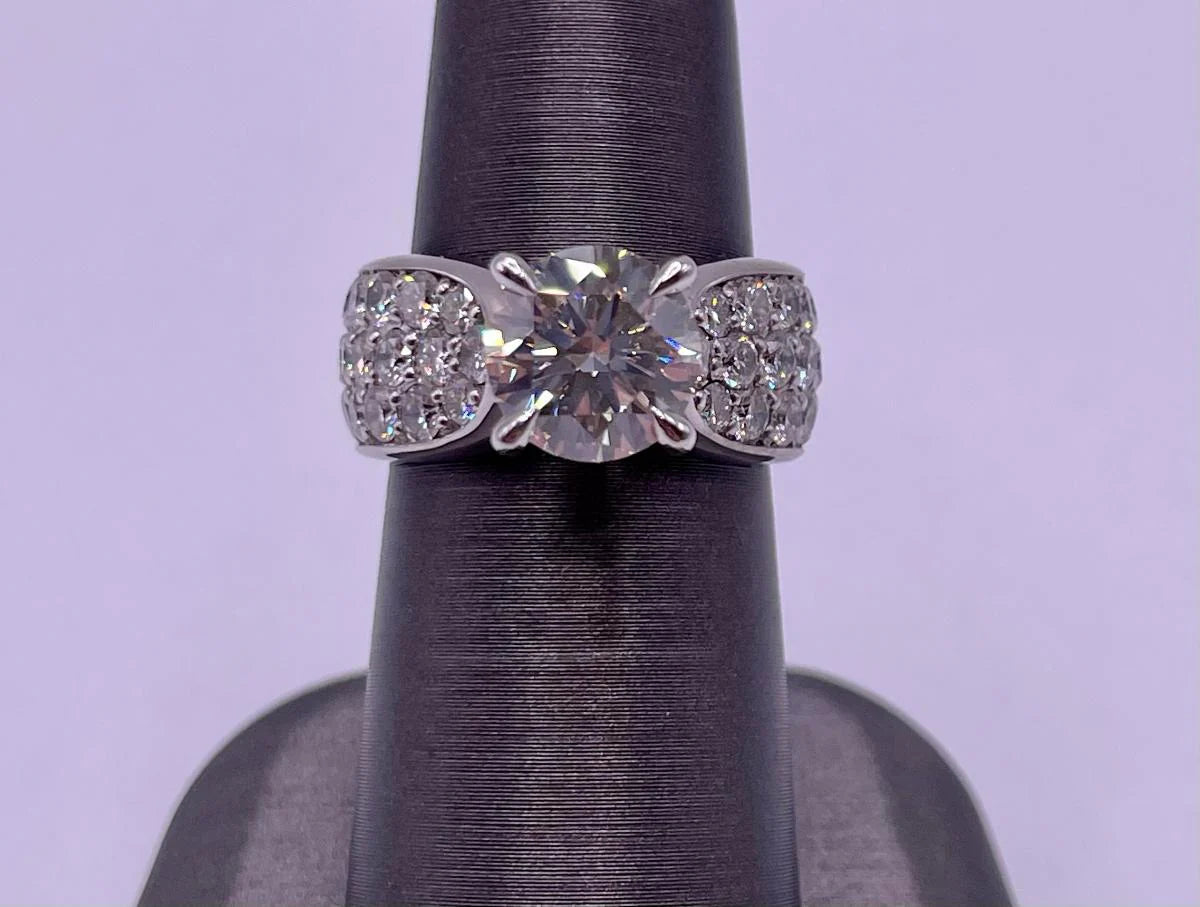Diamonds Types and Styles
Discover the world of diamonds with Johnston Jewelers, where each stone is crafted to showcase brilliance and individuality. This page provides an overview of the diverse types of diamonds, from classic cuts like round and princess to unique shapes such as pear and marquise. Explore various styles, from solitaire settings to intricate halo and three-stone designs, each tailored to enhance the diamond’s natural beauty. You’ll also find a range of colors, including traditional white diamonds and rare colored diamonds, offering endless ways to personalize your jewelry. View the different diamond types and styles below to find the perfect fit for your taste and occasion.

Round Cut
Round cut diamonds are the most popular and iconic diamond shape, known for their exceptional sparkle and brilliance. Developed in the early 20th century, this cut was perfected by mathematicians to maximize the diamond’s reflective qualities, often boasting 58 carefully angled facets. Its timeless appeal and intense fire make it the top choice for engagement rings, symbolizing enduring love and commitment. Due to its popularity, round cut diamonds tend to command a premium in value, but they remain a classic and versatile choice that suits various jewelry styles, from modern to vintage settings.

Emerald Cut
Emerald cut diamonds are distinctive for their elongated, rectangular shape and step-cut facets, which create a hall-of-mirrors effect with a beautiful, understated shimmer. This cut dates back to the Art Deco period, emphasizing clean lines and symmetry, and it has since become a favorite for those seeking a sophisticated and elegant look. Although emerald cuts lack the fiery sparkle of other cuts, they reveal the clarity and quality of the diamond more openly, making them a popular choice for those who appreciate purity and clarity. Their large, open facets showcase the diamond’s color and clarity, lending an air of refined luxury to any piece.

Oval Cut
Oval cut diamonds offer a unique blend of classic and modern appeal, merging the brilliance of the round cut with an elongated shape that creates an illusion of larger size. Developed in the 1960s, this cut quickly gained popularity for its versatility and flattering appearance, especially on engagement rings, as it elongates the finger. Oval diamonds exhibit impressive sparkle and, with their smooth, symmetrical outline, adapt well to both traditional and contemporary settings. They are valued for their ability to maximize carat weight, making them an excellent choice for those looking for a diamond that is both distinctive and radiant.
The 4Cs of Diamonds
The 4Cs—Cut, Color, Clarity, and Carat Weight—are the essential criteria for evaluating a diamond’s quality and value. Developed by the Gemological Institute of America (GIA), this system provides a universal standard to assess and compare diamonds. Cut determines how well a diamond’s facets interact with light, significantly affecting its sparkle; it ranges from Excellent to Poor. Color evaluates the diamond’s lack of color on a scale from D (colorless) to Z (light yellow or brown), with colorless diamonds being the most prized. Clarity measures the presence of natural inclusions or blemishes under 10x magnification, with grades from Flawless to Included, impacting a diamond’s rarity and beauty. Finally, Carat Weight refers to the diamond’s size, with larger carat weights generally commanding higher prices. Together, the 4Cs guide buyers in choosing a diamond that meets their desired balance of beauty, rarity, and value.
Contact form
Featured collection
-
 Sold out
Sold out.11 ct double heart pend
Regular price $ 975.00 USDRegular priceUnit price per -
 Sold out
Sold out.09ctw X and O earrings
Regular price $ 525.00 USDRegular priceUnit price per -
 Sold out
Sold out.09ctw love earrings
Regular price $ 650.00 USDRegular priceUnit price per -
.37 ct heart station
Regular price $ 1,540.00 USDRegular priceUnit price per




